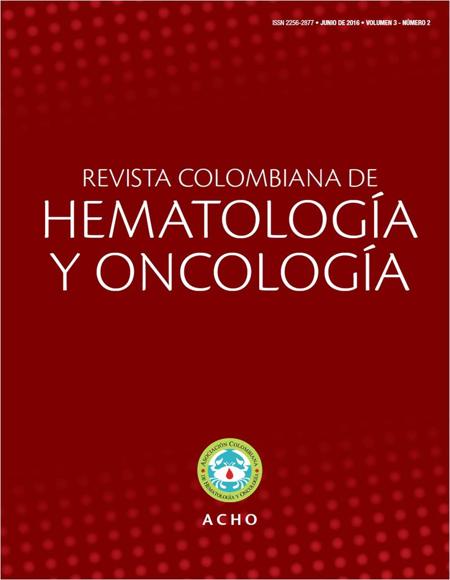Niveles de EGF y VEGF en el plasma rico en plaquetas antes y después de antiagregantes plaquetarios.
EGF y VEGF levels in platelet-rich plasma before and after antiplatelet drugs.

Esta obra está bajo una licencia internacional Creative Commons Atribución-NoComercial-CompartirIgual 4.0.
Mostrar biografía de los autores
Introducción: el plasma rico en plaquetas (PRP) es un producto autólogo rico en factores de crecimiento indispensables en la regeneración tisular. Objetivo: cuantificar las concentraciones de VEGF y EGF en el PRP antes y después de los antiagregantes plaquetarios: aspirina (AAS) y clopidogrel; y su correlación con el recuento plaquetario. Material y método: se estudiaron en 32 sujetos sanos concentraciones de EGF y VEGF (Elisa) en PRP, plasma pobre en plaquetas (PPP), exudado y lisado, antes y después de aspirina (AAS) y clopidogrel. Resultados: la concentración de EGF en el PRP y sus subproductos antes y después del tratamiento con AAS o clopidogrel no mostró diferencia significativa para ninguno de los derivados plaquetarios analizados; no así para el VEGF, donde se encontró diferencia significativa en el subproducto ‘lisado’ (p<0,05). Se apreció correlación entre el recuento plaquetario en el PRP basal (578,25±125,33x103xmm3) frente a la concentración basal de EGF (296±203,6pg/ml) (r=0,726, p<0,01), en el grupo tratado con AAS, pero no para el clopidogrel. Conclusiones: las cifras plaquetarias, en los subproductos de concentrados plaquetarios o sangre periférica, no son predictivas de las concentraciones de FC, dado que otros elementos pueden influenciar la liberación final de estos. De igual manera, los datos obtenidos parecen apuntar la utilidad clínica que puede tener la aplicación de PRP en sujetos tratados con AAS o clopidogrel en el momento que así lo ameriten.
Visitas del artículo 215 | Visitas PDF 393
- Dohan DM, Choukroun J, Diss A, Dohan SL, Dohan AJ, Mouhyi J, et al. Platelet-rich fibrin (PRF): a second-generation platelet concentrate. Part II: platelet-related biologic features. Oral Surg Oral Med Oral Pathol Oral Radiol Endod. 2006;101(3):e45-50.
- Dohan DM, Choukroun J, Diss J, Dohan SL, Dohan AJ, Mouhyi J, et al. Platelet-rich fibrin (PRF): a second-generation platelet concentrate. Part III: leucocyte activation: a new feature for platelet concentrates? Oral Surg Oral Med Oral Pathol Oral Radiol Endod. 2006;101(3):e51-5.
- Ogino Y, Ayukawa Y, Kukita T, Koyano K. The contribution of platelet-derived growth factor, transforming growth factor-β1, and insulin-like growth factor-I in platelet-rich plasma to the proliferation of osteoblast-like cells. Oral Surg Oral Med Oral Pathol Oral Radiol Endod. 2006;101(6):724-9.
- Foster TE, Puskas BL, Mandelbaum BR, Gerhardt MB, Rodeo SA. Platelet-rich plasma: from basic science to clinical applications. Am J Sport Med. 2009;37(11):2259-72.
- Anitua E, Sánchez M, Prado R, Orive G. Plasma rich in growth factors: the pioneering autologous technology for tissue regeneration. J Biomed Mat Res A. 2011;97(4):536.
- Sánchez AR, Sheridan PJ, Kupp LI. Is platelet-rich plasma the enhancement factor? A current review. Int J Oral Maxillofac Implants 2003;18(1):93-103.
- Fernández-Barbero JE, Galindo-Moreno P, Ávila-Ortiz G, Caba O, Sánchez-Fernández E, Wang HL. Flow cytometric and morphological characterization of platelet rich plasma gel. Clin Oral Implants Res. 2006;17(6):687-93.
- Anitua E, Andía I, Sánchez M, Azofra J, del Mar Zalduendo M, de la Fuente M, et al. Autologous preparations rich in growth factors promotes proliferation and induce VEGF and HGF production by human tendon cells in culture. J Orthop Res. 2005;23(2):281-6.
- Anitua E, Sánchez M, Orive G, Andía I. The potential impact of the preparation rich in growth factors (PRGF) in different medical fields. Biomaterials 2007;28(31):4551-60.
- González M, Arteaga-Vizcaíno M, Benito M, Benito M. Aplicación del plasma rico en plaquetas (PRP) y sus derivados en implantología dental y cirugía plástica. Invest Clín. [internet]. 2012 dic [citado 2016 jul 27]; 53(4):408-18.
- Kawase T, Okuda K, Wolff LF, Yoshie H. Platelet-rich plasmaderived fibrin clot formation stimulates collagen synthesis in periodontal ligament and osteoblastic cells in vitro. J Periodontol. 2003;74(6):858-64.
- Kawase T, Okuda K, Saito Y, Yoshie H. In vitro evidence that the biological effects of platelet-rich plasma on periodontal ligament cells is not mediated solely by constituent transforminggrowth factor-beta or platelet-derived growth factor. J Periodontol. 2005;76(5):760-7.
- Giuffre G, Caputo G, Misso S, Peluso F. Platelet-rich plasma treatment and hemostasis in patients with hemorrhagic risk. Minerva Stomatol. 2006;55(11-12):599-609.
- Aggarwal BB. Signalling pathways of the TNF superfamily: a double-edged sword. Nat Rev Immunol. 2003;3(9):745-56.
- Zachary I. VEGF signalling: integration and multi-tasking in endothelial cell biology. Biochem Soc Trans. 2003;31(Pt 6):1171-7.
- Ferrara N, Gerber HP, LeCouter J. The biology of VEGF and its receptors. Nat Med. 2003;9(6):669-76.
- Berlanga-Acosta J, Gavilondo-Cowley J, López-Saura P, González-López T, Castro-Santana MD, López-Mola E, et al. Epidermal growth factor in clinical practice - a review of its biological actions, clinical indications and safety implications. Int Wound J. 2009;6(5):331-46.
- Yates RA, Nanney LB, Gates RE, King LE Jr. Epidermal growth factor and related growth factors. Int J Dermatol. 1991;30(10):687-94.
- Agren MS, Rasmussen K, Pakkenberg B, Jorgensen B. Growth factor and proteinase profile of Vivostat® platelet-rich fibrin linked to tissue repair. Vox Sang. 2014;107(1):37-43.
- Zimmermann R, Jakubietz R, Jakubietz M, Strasser E, Schlegel A, Wiltfang J, et al. Different preparation methods to obtain platelet components as a source growth factors for local application. Transfusion 2001;41(10):1217-24.
- Durante C, Agostini F, Abbruzzese L, Toffola RT, Zanolin S, Suine C, et al. Growth factor release from platelet concentrates: analytic quantification and characterization for clinical applications. Vox Sang. 2013;105(2):129-36.
- Barsotti MC, Losi P, Briganti E, Sanguinetti E, Magera A, Al Kayal T, et al. Effect of platelet lysate on human cells involved in different phases of wound healing. PLoS One. 2013;8(12):e84753.
- Molina V, Arruzazabala L, Carbajal D, Más R. Farmacología de los agentes antiagregantes plaquetarios. Revista Cenic Ciencias Biológicas. 2005;36(1):3-12.
- Patrono C, Bachmann F, Baigent C, Bode C, De Caterina R, Charbonnier B, et al. Grupo de trabajo sobre el uso de agentes antiplaquetarios en pacientes con enfermedad cardiovascular aterosclerótica de la Sociedad Europea de Cardiología. Documento de consenso de expertos sobre el uso de agentes antiplaquetarios. Rev Esp Card. 2004;57:963-80.
- Harker LA, Boissel JP, Pilgrim AJ, Gent M. Comparative safety and tolerability of clopidogrel and aspirin: results from CAPRIE. CAPRIE Steering Committee and Investigators. Clopidogrel versus aspirin in patients at risk of ischaemic events. Drug Saf. 1999;21(4):325-35.
- Salazar-Álvarez AE, Riera-del-Moral LF, García-Arranz M, Álvarez-García J, Concepción-Rodríguez NA, Riera-de-Cubas L. Uso de plasma rico en plaquetas para cicatrización de úlceras crónicas de miembros inferiores. Actas Dermosifiliogr. 2014;105(6):597-604.
- Martínez-Zapata MJ, Martí-Carvajal AJ, Solà I, Expósito JA, Bolíbar I, Rodríguez L, et al. Autologous platelet-rich plasma for treating chronic wounds. Cochrane Database Syst Rev. 2016;(5):CD006899.
- Rodríguez-Zendejas NJ, Contreras-Ruiz J, Garrido-Espíndola X, Romero-Valdovinos M, Lozano-Platonof A. Uso de plasma autólogo rico en plaquetas en úlceras de difícil cicatrización. Reporte de un caso. Med Cutan Iber Lat Am. 2014;42(1-3):62-4.
- Tamayo M. El proceso de la investigación científica: incluye evaluación y administración de proyectos de investigación. 3a ed. México: Limusa Noriega Editores; 2005.
- Beutler E, Lichtman M. Williams’s hematology. 5th ed. New York, USA: McGraw-Hill; 1995.
- Born GV, Cross MJ. The aggregation of the blood platelets. J Phisiol. 1963;168:178-95.
- Anitua E. La utilización de los factores de crecimiento plasmáticos en cirugía oral, maxilofacial y periodoncia (PRGF). RCOE. 2001;6:305-15.
- Engvall E, Perlman P. Immunosorbent assay. Immunochem. 1971;8(9):871-4.
- Daniel WW. Bioestadística. Base para el análisis de las ciencias de la salud. 2a ed. México, D.F.: Editorial Limusa; 1991.
- Instituto Venezolano de Investigaciones Clínicas (IVIC). Consentimiento informado. 2012 [citado 2015 jun 26]. Disponible en: http://www.ivic.gob.ve/bioetica
- World Medical Association. World Medical Association Declaration of Helsinki: ethical principles for medical research involving human subjects. JAMA. 2013;310(20):2191-4.
- Council for International Organizations of Medical Sciences. Pautas éticas internacionales para la investigación biomédica en seres humanos. Ginebra: CIOMS; 2002.
- Antoniades HN. Human platelet-derived growth factor (PDGFBB): purification of PDGFBB-I and PDGFBB-II and separation of their reduced subunits. Proc Natl Acad Sci USA. 1981;78(12):7314-7.
- Blair P, Flaumenhaft R. Platelet alpha-granules: basic biology and clinical correlates. Blood Rev. 2009;23(4):177-89.
- Ledent E, Wasteson A, Berlin G. Growth factor release during preparation and storage of platelet concentrates. Vox Sang 1995;68(4):205-9.
- Reigstad LJ, Varhaug JE, Lillehaug JR. Structural and functional specificities of PDGF-C and PDGF-D, the novel members of the platelet-derived growth factors family. FEBS J. 2005;272(22):5723-41.
- Eppley BL, Woodwell JE, Higgins J. Platelet quantification and growth factor analysis from platelet-rich plasma: implications for wound healing. Plast Reconstr Surg 2004;114(6):1502-8.
- Lee JW, Kwon OH, Kim TK, Cho YK, Choi KY, Chung HY, et al. Platelet-rich plasma: quantitative assessment of growth factor levels and comparative analysis of activated and inactivated groups. Arch Plast Surg. 2013;40(5):530-5.
- Weibrich G, Kleis WK, Hafner G, Hitzler WE. Growth factors levels in platelet-rich plasma and correlations with donor age, sex and platelet count. J Craniomaxillofac Surg. 2002;30(2):97-102.
- Weibrich G, Kleis WK, Hafner G. Growth factor levels in the platelet-rich plasma produced by 2 different methods: curasantype PRP kit versus PCCS PRP system. Int J Oral Maxillofac Implants 2002;17(2):184-90.
- Zimmermann R, Jakubietz R, Jakubietz M, Strasser E, Schlegel A, Wiltfang J, et al. Different preparation methods to obtain platelet components as a source growth factors for local application. Transfusion 2001;41(10):1217-24.
- Perseghin P, Sciorelli G, Belotti D, Speranza T, Pogliani Em, Ferro O, et al. Frozen-and-thawed allogeneic platelet gels for treating postoperative chronic wounds. Transfusion. 2005;45(9):1544-6.










